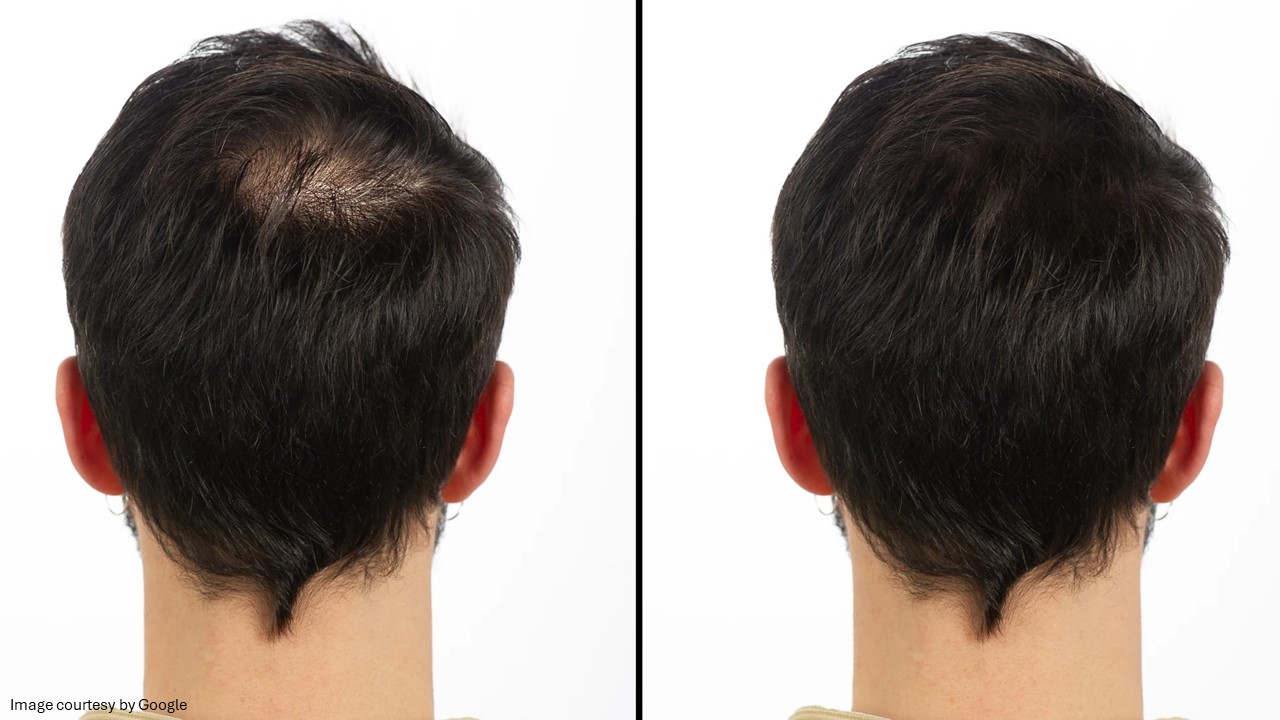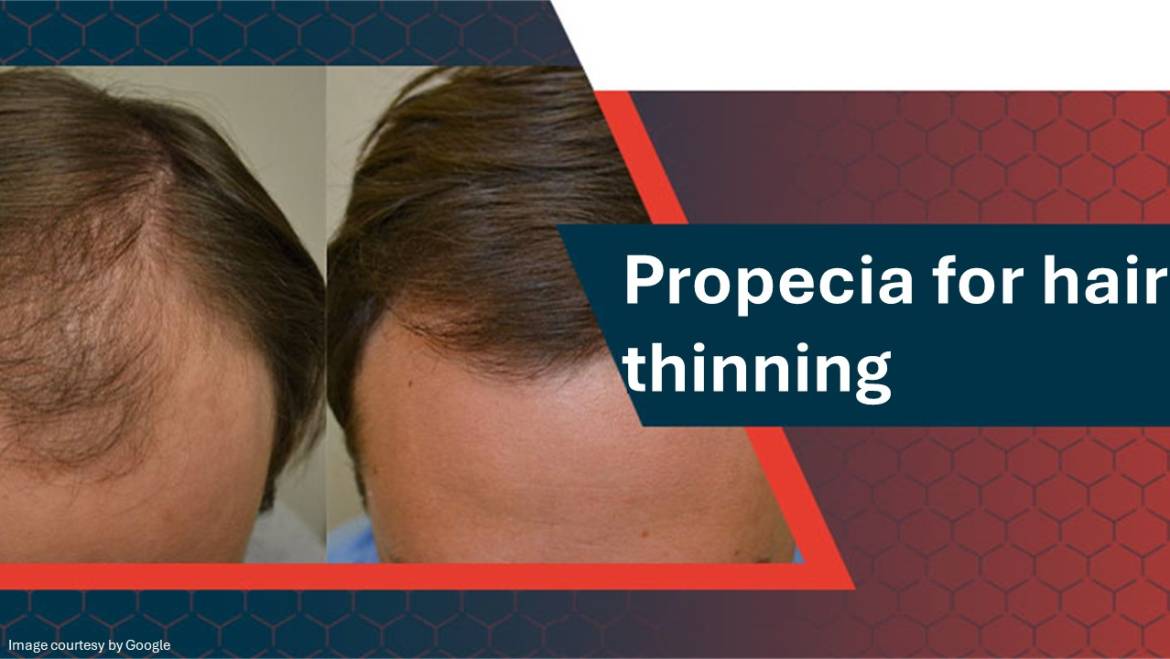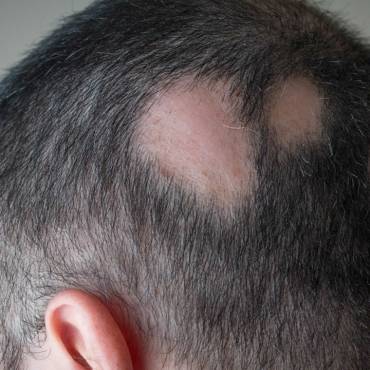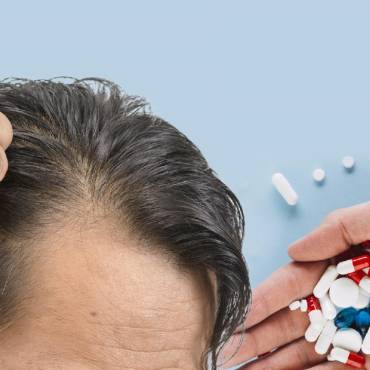Propecia 1 mg is an oral medication that inhibits the transformation of testosterone to dihydrotestosterone (DHT). DHT is a hormone responsible for causing male pattern baldness, also called androgenetic alopecia. It has the active ingredient Finasteride, which works by blocking DHT by inhibiting the activity of type II 5 alpha reductase enzyme that is available in higher concentrations in and around the hair follicles of balding men dealing with androgenetic alopecia. Most people who use finasteride experience a rapid reduction in serum DHT concentration. Reducing the DHT concentration stops or slows the shrinking of the affected hair follicles in many men and helps restore miniaturized hair follicles to regrow visible hair.
How effective is Propecia in treating hair loss?
Research studies have demonstrated that after five years of treatment, most men taking Propecia maintained their hair density. Approximately two-thirds of men who take Finasteride 1 mg regularly go to experience regrowth. If your hair loss is not severe, then your daily dose of this hair loss medication may help you to regrow hair in areas of your scalp or receding hairline that only have mild hair thinning. Evidence from the journal of the American Academy of Dermatology, researchers found that men who use Finasteride to treat androgenetic alopecia in men experienced a significant elevation in their average hair count over two years. Those who participated in the research study also experienced increased new hair growth and improved general appearance of their hair with Finasteride.
According to researchers, Finasteride is considered the first-line non-surgical treatment for patients experiencing hair loss or thinning. If you are having a hair transplant, the oral medication can help maintain the existing native hair, offering longer-lasting results. Finasteride can slow down the process if someone is experiencing early stages of hair loss.
While not everyone who takes oral Finasteride 1 mg regrows hair, many men experience a modest but noticeable increase in their hair growth.
How long does it take to see finasteride results?
After about three to four months of taking Propecia 1 mg, one should notice a significant improvement in hair loss. After a year, the results should appear to be significantly visible.
-
-
0 to 3 months:
- The medicine begins to work immediately, but you likely won’t see results.
- One may notice more hair falling within the initial weeks of usage.
- This is normal and won’t last long.
-
3 to 4 months:
- Hair loss or thinning slows down or even stops.
- You might observe a little bit of hair growth.
-
Over four months:
- Improvement ramps up.
- Significant improvement in hair appearance is noticeable by the one-year mark.
-
How to improve results?
Propecia is available as a tablet and must be taken daily, before or after food. However, extra steps like avoiding harsh and chemical-based hair products can help this oral medication and speed up your results.
As mentioned above, Propecia works well, but according to researchers, one can expect even better results if they double up the treatment and use it with topical minoxidil solution, another FDA-approved hair loss medication that helps stimulate hair growth.
Finasteride and Minoxil have different mechanisms of action and target different hair loss issues in men, which is why they work so well together.
Rather than blocking DHT, minoxidil acts locally and allows your hair to enter the growth phase of the growth cycle. It also affects blood circulation in your scalp, which provides extra nutrients to your hair follicles and ultimately improves growth.
You may have heard that minoxidil, sold under Rogaine, is available as a liquid solution designed to be applied directly to your scalp.
Propecia tablets are effective, but they aren’t magic baldness-erasing pills. To continue blocking the activity of DHT and protect your hair, you must use Propecia 1 mg daily and avoid the risk of side effects. The same theory is applied to other hair loss treatments like minoxil. To maintain results, one needs to continue using these hair loss medicines over the long term.

The Final verdict!
Propecia (Finasteride) works for most people, and that isn’t a topic of debate. But for those who think it’s a magical pill for dead hair follicles, then look out for these facts:
-
- Propecia is an effective hair loss treatment that can slow down hair loss and prevent and even reverse androgenetic alopecia in men.
- Within limitations, it can be brought back from dead hair follicles.
- One shouldn’t expect to wake up one day with hair that has grown twice as thick overnight.
- Propecia and other medical hair treatments like minoxidil work gradually and require long-term usage for best results.
- Be sure to seek medical help from a dermatologist before using Propecia.
Combine your oral medication with minoxidil to get the best results from Propecia 1 mg. A healthy lifestyle, a balanced diet, and good hair care habits help promote the hair life.
admin
Latest posts by admin (see all)
- What is Triluma Cream? Uses, Benefits, and How It Works for Skin - December 26, 2024
- What Causes Dark Spots? Understanding the Science of Hyperpigmentation and How Skin Lightening Products Help - December 26, 2024
- Tretinoin Gel vs. Cream: Which Formulation is Right for Your Skin? - December 20, 2024



